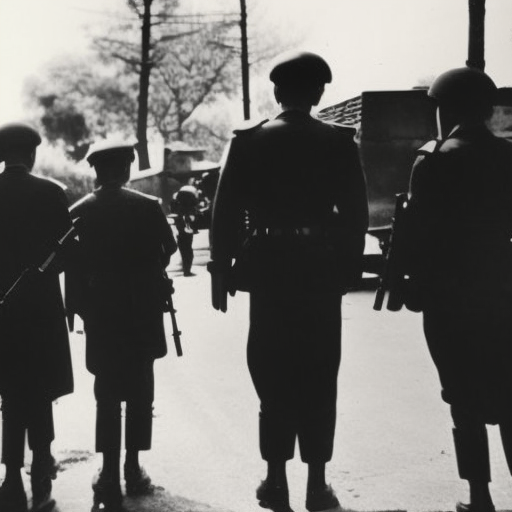Tet Offensive: A Turning Point in the Vietnam War
The Tet Offensive was a major military campaign launched by the North Vietnamese Army (NVA) and the Viet Cong (VC) during the Vietnam War. It began on January 30, 1968, coinciding with the Vietnamese New Year holiday known as Tet. The offensive marked a significant turning point in the war and had a profound impact on both the American public and the course of the conflict.
Background
By 1968, the Vietnam War had been raging for several years, with the United States supporting the South Vietnamese government against the communist forces in the North. The American military had initially underestimated the strength and determination of the NVA and VC, leading to a protracted and costly conflict. The Tet Offensive was designed to exploit this underestimation and deliver a decisive blow to the American and South Vietnamese forces.
The Offensive
The Tet Offensive involved coordinated attacks on more than 100 cities and towns across South Vietnam. The NVA and VC launched surprise assaults on key military installations, government buildings, and major urban centers. The offensive was a departure from the guerrilla tactics that had characterized the conflict until then, as the NVA and VC sought to engage in conventional warfare and seize control of urban areas.
The initial phase of the offensive saw the NVA and VC achieve significant gains, capturing the city of Hue and launching attacks on the U.S. Embassy in Saigon. The intensity and scale of the attacks caught the American and South Vietnamese forces off guard, leading to heavy casualties and widespread destruction. The offensive demonstrated the NVA and VC’s ability to mount large-scale operations and challenged the notion that the U.S. was winning the war.
American Response
The Tet Offensive had a profound impact on the American public’s perception of the war. Prior to the offensive, the U.S. government had been assuring the public that victory was within reach. However, the scale and audacity of the attacks shattered this illusion and eroded public support for the war effort. The media coverage of the offensive, including the iconic image of the Saigon Execution, further fueled anti-war sentiment.
President Lyndon B. Johnson, facing mounting criticism and public discontent, decided not to seek re-election in 1968. The Tet Offensive also prompted a shift in American strategy, as the U.S. military recognized the need for a new approach. General William Westmoreland’s strategy of attrition was abandoned in favor of a policy of de-escalation and negotiations.
Legacy
While the Tet Offensive was a military setback for the NVA and VC, it was a psychological victory that undermined American confidence in the war. The offensive revealed the extent of the communist forces’ capabilities and their determination to continue the fight. It also exposed the credibility gap between the government’s optimistic assessments and the reality on the ground.
The Tet Offensive marked a turning point in the Vietnam War, leading to a reassessment of American strategy and a shift in public opinion. It fueled the anti-war movement and contributed to the growing opposition to the war in the United States. The offensive also highlighted the challenges faced by the U.S. military in fighting a determined and elusive enemy in a foreign land.
In conclusion, the Tet Offensive was a major military campaign that had a profound impact on the Vietnam War. It shattered American confidence in the war effort, led to a change in strategy, and fueled the anti-war movement. The offensive demonstrated the resilience and determination of the NVA and VC and marked a turning point in the conflict.












